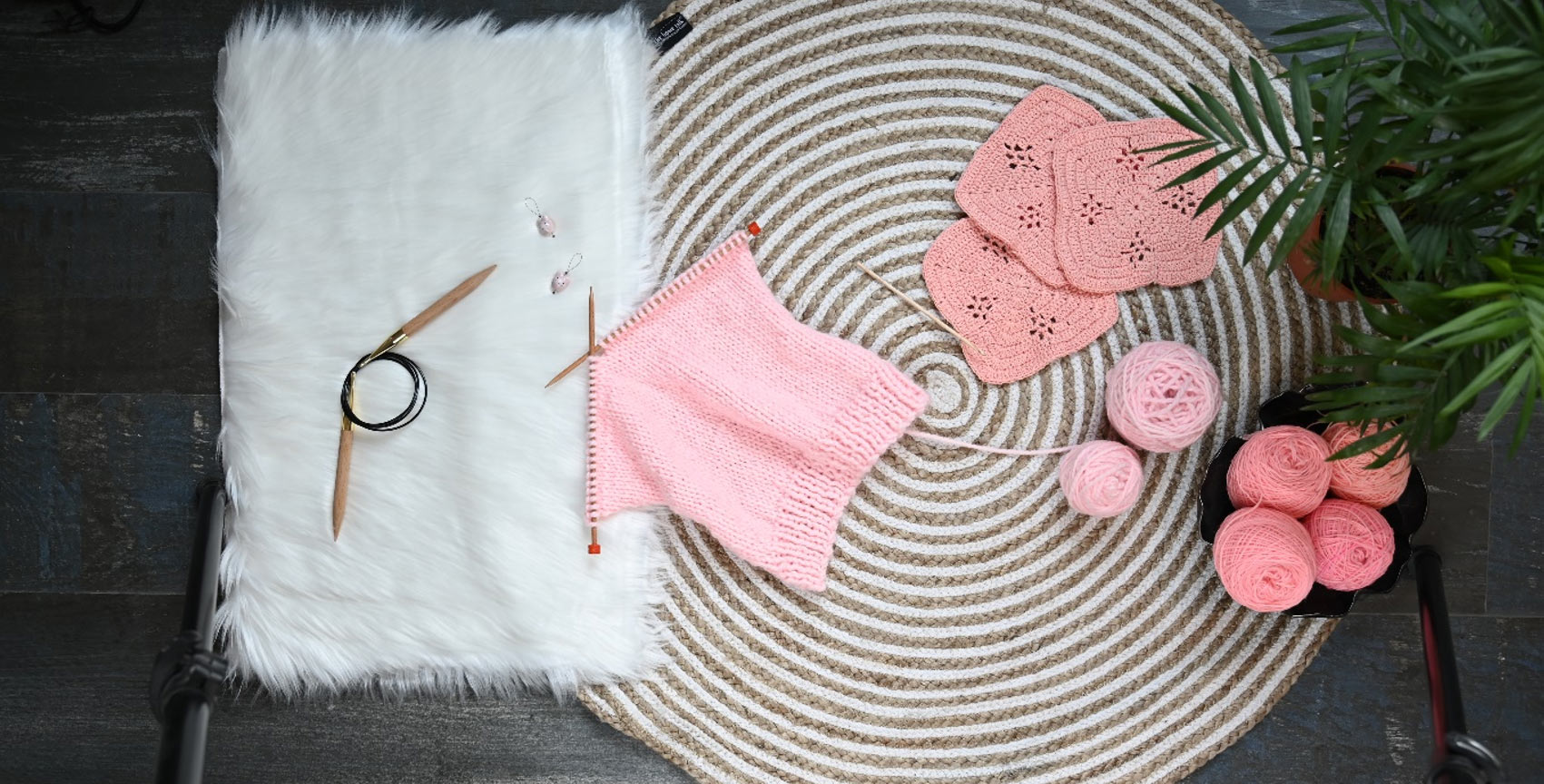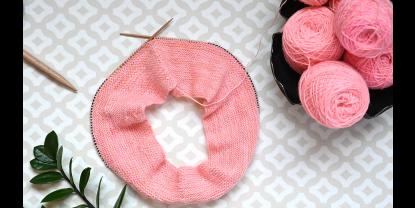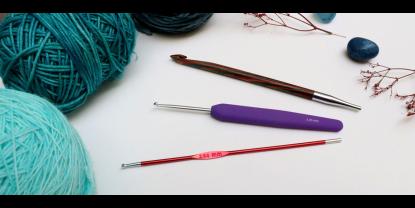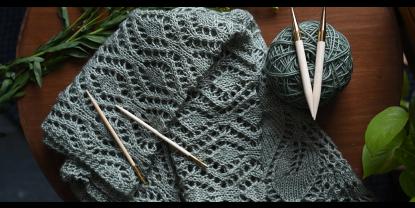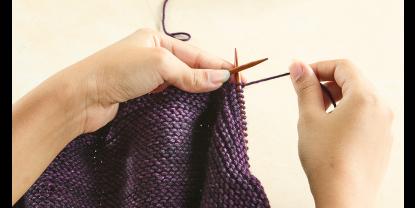Knitting needles are more than tools; they shape crafting experiences for new and experienced knitters alike. When it comes to materials, it affects, from the feel in your hands to the finish of your fabric. Among the many materials available, wooden knitting needles remain a favorite. Why? The greatest benefit is the way they feel in the hands, warm and smooth to the touch. Also, they are perfect for any knitter who doesn't like the cold feel and clicking noise of metal needles. Plus, wooden needles are perfect to pack for holidays, especially if you are flying and airlines have regulations for metals and sharp points. In this blog, we’ll explore the benefits of wooden knitting needles, what projects to use them for, some care tips and the KnitPro range.
Why Choose Wooden Knitting Needles?
Generally, knitters learn the craft with a borrowed pair of wooden or bamboo knitting needles. Wood has certain advantages as one learns to hold knitting needles, work with yarn and make stitches. So, if you ask, are wooden needles good for beginners? The answer is yes! Their grip makes it easier to manage stitches without dropping them. Do they work with all yarns? Absolutely. They're especially helpful with slippery yarns like silk. Choosing wooden knitting needles depends on the knitter’s preference, but yarn fiber and weight also have a role to play.
1. Gentle Grip & Better Control
Wooden needles naturally grab the yarn, making them perfect for beginners or anyone working with slippery fibers. That slight grip helps prevent accidentally dropped stitches (though there’s a way to fix them, refer to our blog on how to fix a dropped stitch)and gives you greater control over your stitches.
2. Warm to the Touch
Unlike metal needles, wood is warm and comfortable to hold, especially during long knitting sessions. This is ideal for knitters with joint sensitivities or arthritis. You can find the natural grooves easing the hold on the needle and supporting stitch-making. In fact cubic knitting needles in wood are preferred for crafting with arthritis.
3. Quiet Crafting
Love to knit while watching TV or listening to music a podcast? Wooden needles are nearly silent. No clicking or clacking, just the soft, satisfying rhythm of yarn gliding over smooth wood.
4. Great for All Yarn Types
Versatile and pairs well with all kinds of yarns from wool and alpaca to cotton and bamboo. They’re particularly useful for working with lace or silk, where control is key.
Best Projects for Wooden Needles
Wooden needles shine in a variety of projects, especially when control and comfort matter. You can easily choose them for:
Socks & Baby Items: Use smaller-sized wooden needles for delicate projects like socks, baby hats, or booties. Here, wooden double-pointed knitting needles and circulars work beautifully. The magic loop technique with a circular knitting needle is recommended for small circumference projects. Mini interchangeable circular needles, 5cm/ 2” needles, are also handy.
Sweaters & Shawls: Larger wooden needles work well for sweaters, wraps, and shawls, especially in wool or other natural fibers.
Chunky Knits: Wooden needles are also available in jumbo sizes, perfect for quick-knit blankets or scarves using super bulky yarns.
Choosing Wooden Knitting Needles
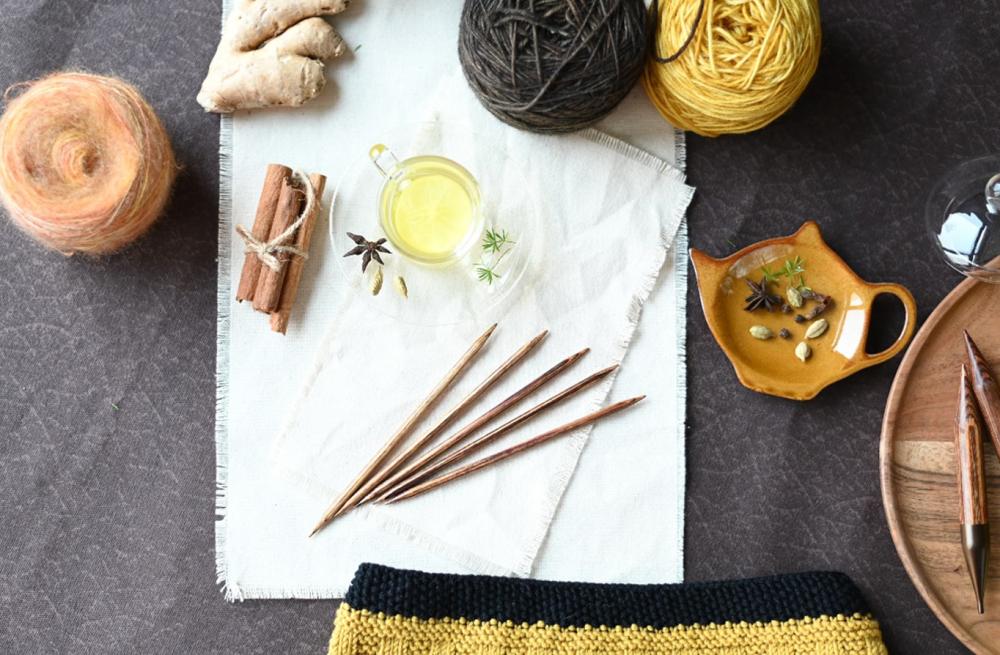
Wood needles come in different sizes and types. Choosing the right option depends on your comfort, project and yarn fiber.
- Single-pointed needles are ideal for flat pieces like scarves or dishcloths.
- Circular Needles, great for larger projects, knitting in the round, or even back-and-forth knitting. There are options of fixed circulars as well as interchangeable circular needles and sets. The knitting needle sets are recommended for their versatility. Mini interchangeable needles, shorties of 5cm/ 2”, are new additions that come in handy for small circumference projects. Think socks, sleeves, baby garments and toys.
- Double-Pointed Needles (DPNs) are perfect for small circular projects like socks or sleeves.
- Cable needles in wooden materials are a vital part of a knitting toolkit, especially when working with intricate cables.
Caring for Your Wooden Needles
Like any natural material, wooden needles need some TLC:
Tip 1 - Keep them dry. Store away from moisture to prevent warping. Keep them stored and organized in cases and sets.
Tip 2 - Avoid extreme temperatures. Don’t leave your needles in a hot car or near heaters. Do not sit very close to the fireplace for a long period of time.
Tip 3 - Polish occasionally using a natural wood polish or beeswax to keep them smooth and nourished.
When it comes to care instructions, the most obvious question that comes to your mind is, can wooden needles break? They can, especially at smaller sizes or under pressure. However, that said, quality brands like KnitPro use durable woods designed to last.
Why is wood preferred?
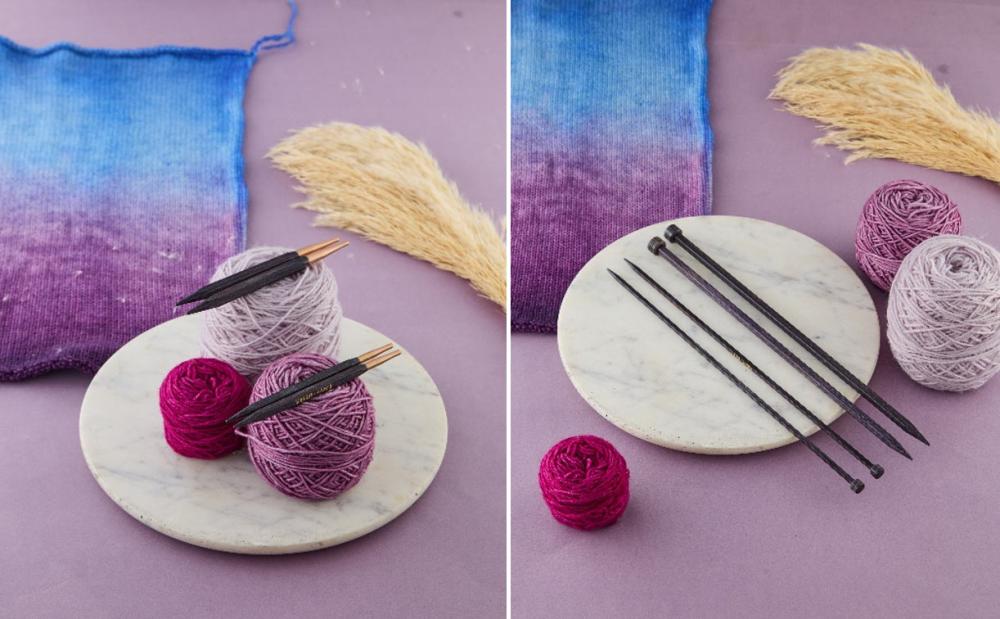
Whether you're picking up needles for the first time or adding to a well-loved collection, wooden knitting needles are supportive tools. Warm, whisper-quiet, and gentle on both your yarn and your hands.
KnitPro’s wide selection of wooden needles—available in straights, circulars, DPNs, and interchangeable sets- ensures there’s something for every knitter and every project. Explore the full range and treat yourself to the natural feel of wood.
Our engineered wood needles, made from birchwood, laminated and densified, are available in radiant shades inspired by nature. Dreamz offers color-coded needles in shades unique to size. Basix knitting needles made of beechwood in natural shade is a good choice for beginners as well as advanced knitters. J’adore Cubics are our square-shaped wooden needles in a pretty shade of lavender. Ginger offers a range of knitting needles in the earthy brown shade. Among special sets, the Denim Indigo set offers wooden needles in a colored Indigo shade. For those chunky sizes, we’ve got Jumbo for cozy knits. Refer to our guide on getting started with jumbo knitting.


